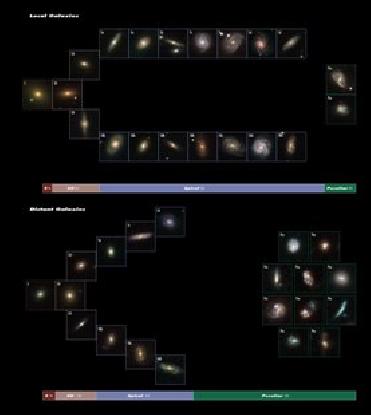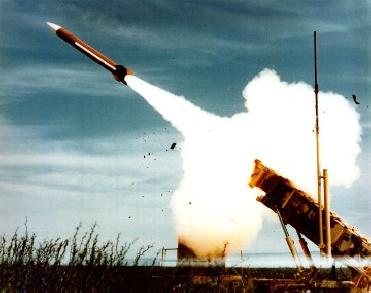
The image created from data provided by the NASA/ESA Hubble Space Telescope and the Sloan Digital Sky Survey demonstrates that the Hubble sequence six billion years ago was very different from the one that astronomers see today. A Hubble Photo
WASHINGTON (PTI): The beautiful spiral galaxies of modern Universe were ugly ducklings six billion years ago, European astronomers have claimed.
Using data from the NASA/ESA Hubble Space Telescope, the team led by Francois Hammer of the Observatoire de Paris has created a census of galaxy types and shapes from a time before the earth and the sun existed, up to the present day.
After sampling 116 local galaxies and 148 distant galaxies, they found that contrary to contemporary thought, more than half of the present-day spiral galaxies had peculiar shapes as recently as 6 billion years ago.
�This means that in the last six billion years, these peculiar galaxies must have become normal spiral, giving us a more dramatic picture of the recent Universe than we had before,� Hammer said.
The team, for the first time, completed a census of galaxy types at two different points in the Universe's history in effect, creating two Hubble sequences that help explain how galaxies form, European Space Agency reported.
The astronomers show that the Hubble sequence six billion years ago was very different from the one that astronomers see today.
�Six billion years ago, there were many more peculiar galaxies than now � a very surprising result,� said Rodney Delgado-Serrano, lead author of the related paper recently published in Astronomy and Astrophysics.
�This means that in the last six billion years, these peculiar galaxies must have become normal spirals, giving us a more dramatic picture of the recent Universe than we had before,� Delgado-Serrano said.
The study of the shapes and formation of galaxies, known as morphology, is a critical and much-debated topic in astronomy.
An important tool for this is the 'Hubble sequence' or the 'Hubble tuning-fork diagram', a classification scheme invented in 1926 by the same Edwin Hubble in whose honour the space telescope is named.
Hubble's scheme divides regular galaxies into three broad classes � elliptical, lenticular and spiral � based on their visual appearance. A fourth class contains galaxies with an irregular appearance.
�Our aim was to find a scenario that would connect the current picture of the Universe with the morphologies of distant, older galaxies to find the right fit for this puzzling view of galaxy evolution,� Hammer said.
Also contrary to the widely held opinion that galaxy mergers result in the formation of elliptical galaxies, Hammer and his team support a scenario in which these cosmic clashes result in spiral galaxies.
 Next Article
Next Article












The Indian Air Force, in its flight trials evaluation report submitted before the Defence Ministry l..
view articleAn insight into the Medium Multi-Role Combat Aircraft competition...
view articleSky enthusiasts can now spot the International Space Station (ISS) commanded by Indian-American astr..
view article